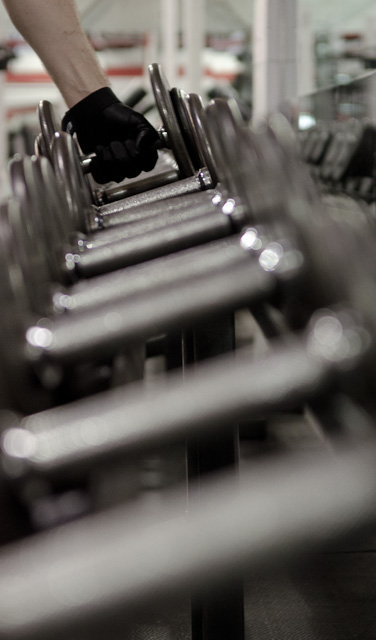DOF question
Feb 24, 2013 14:10:55 #
I've read a lot here and elsewhere, about how to create shallow DOF, (FL, aperture, distance), but I'm still not clear on one aspect of this.
My question is, shooting with an 85mm lens on a DX body at f/1.8, which affects shallow DOF more, the distance from focal plane to subject, or distance from subject to background to blur?
thanks in advance.
Jeffrey
My question is, shooting with an 85mm lens on a DX body at f/1.8, which affects shallow DOF more, the distance from focal plane to subject, or distance from subject to background to blur?
thanks in advance.
Jeffrey

Feb 24, 2013 14:37:00 #
Wabbit
Loc: Arizona Desert
Finch585 wrote:
I've read a lot here and elsewhere, about how to create shallow DOF, (FL, aperture, distance), but I'm still not clear on one aspect of this.
My question is, shooting with an 85mm lens on a DX body at f/1.8, which affects shallow DOF more, the distance from focal plane to subject, or distance from subject to background to blur?
thanks in advance.
Jeffrey
My question is, shooting with an 85mm lens on a DX body at f/1.8, which affects shallow DOF more, the distance from focal plane to subject, or distance from subject to background to blur?
thanks in advance.
Jeffrey
Hey Doc ..... "it's subjective"..... "in the eyes of the beholder" ..... based on what's in front or in back in combination with your focus point .....
Feb 24, 2013 14:38:59 #
Theoretically, DoF extends from 1/3 in front of plane of focus, to 2/3 behind PoF. Most noticeable at largest apertures.
Feb 24, 2013 15:21:51 #
Finch585 wrote:
I've read a lot here and elsewhere, about how to create shallow DOF, (FL, aperture, distance), but I'm still not clear on one aspect of this.
My question is, shooting with an 85mm lens on a DX body at f/1.8, which affects shallow DOF more, the distance from focal plane to subject, or distance from subject to background to blur?
thanks in advance.
Jeffrey
My question is, shooting with an 85mm lens on a DX body at f/1.8, which affects shallow DOF more, the distance from focal plane to subject, or distance from subject to background to blur?
thanks in advance.
Jeffrey
http://www.dofmaster.com/dofjs.html
If you have not seen this calculator before then I suggest you bookmark it. With a few experiments it will give you a good insight into DoF.
Feb 24, 2013 15:26:30 #
If you want the background blurred, get closer to the subject that you want in focus.
Feb 24, 2013 16:34:23 #
Finch585 wrote:
First, your Plane of Focus or Point of Focus ("focal plane" ) should be on your subject. Contrary to your question, there should be no distance from "focal plane" to subject.My question is, shooting with an 85mm lens on a DX body at f/1.8, which affects shallow DOF more, the distance from focal plane to subject, or distance from subject to background to blur?
The closer your camera is to subject, the more narrow your DoF. At Minimum Focusing Distance, macro-photographers often work with just millimeters of DoF, even at f/16.
Feb 25, 2013 12:23:54 #
Finch585 wrote:
I've read a lot here and elsewhere, about how to create shallow DOF, (FL, aperture, distance), but I'm still not clear on one aspect of this.
My question is, shooting with an 85mm lens on a DX body at f/1.8, which affects shallow DOF more, the distance from focal plane to subject, or distance from subject to background to blur?
thanks in advance.
Jeffrey
My question is, shooting with an 85mm lens on a DX body at f/1.8, which affects shallow DOF more, the distance from focal plane to subject, or distance from subject to background to blur?
thanks in advance.
Jeffrey
I'm sorry, but you don't seem to have asked a question.
GHK
Feb 25, 2013 12:39:41 #
Nikonian72 wrote:
Theoretically, DoF extends from 1/3 in front of plane of focus, to 2/3 behind PoF. Most noticeable at largest apertures.
Theoretically? Prove it.
The truth is,for any given focal length, the one third/two thirds "rule" holds true over only a small range of distances.
Feb 25, 2013 12:46:10 #
There's no set answer to this except the statement the photographer is trying to make. Three things impact depth of field: Camera to subject distance, aperture and lens focal length. Experiment with your equipment and learn how it responds to a given shooting situation. Every lens is different!
Feb 25, 2013 12:55:43 #
Finch585 wrote:
I've read a lot here and elsewhere, about how to create shallow DOF, (FL, aperture, distance), but I'm still not clear on one aspect of this.
My question is, shooting with an 85mm lens on a DX body at f/1.8, which affects shallow DOF more, the distance from focal plane to subject, or distance from subject to background to blur?
thanks in advance.
Jeffrey
My question is, shooting with an 85mm lens on a DX body at f/1.8, which affects shallow DOF more, the distance from focal plane to subject, or distance from subject to background to blur?
thanks in advance.
Jeffrey
I don't understand why so many want to make this so complicated. It's really simple. The largest aperture you have on a given lens, close to the subject and fire. If you think f/3.5 for example will be over exposed then set your aperture at the largest and let the camera make the shutter speed decision... couldn't be simpler. To me all this fuss won't make a bit of difference if you know how to properly operate your lens.
Below, for example, was shot with my Canon 28-200 lens in bright sun and I still managed to get a short DOF.

Feb 25, 2013 12:59:15 #
Wabbit
Loc: Arizona Desert
GHK wrote:
I'm sorry, but you don't seem to have asked a question.
GHK
Finch585 wrote:
I've read a lot here and elsewhere, about how to create shallow DOF, (FL, aperture, distance), but I'm still not clear on one aspect of this.
My question is, shooting with an 85mm lens on a DX body at f/1.8, which affects shallow DOF more, the distance from focal plane to subject, or distance from subject to background to blur?
thanks in advance.
Jeffrey
My question is, shooting with an 85mm lens on a DX body at f/1.8, which affects shallow DOF more, the distance from focal plane to subject, or distance from subject to background to blur?
thanks in advance.
Jeffrey
I'm sorry, but you don't seem to have asked a question.
GHK
Hey Doc ..... he did ask a question, maybe poorly worded, but he asked just the same ..... and I'm the only one so far that's attempted to addressed it .....
..... here's his question and I quote
which affects shallow DOF more, the distance from focal plane to subject, or distance from subject to background to blur?
Feb 25, 2013 13:09:19 #
Wabbit
Loc: Arizona Desert
jimmya wrote:
quote=Finch585 I've read a lot here and elsewhere... (show quote)
Hey Doc ..... then you don't understand the ops question .....
..... the poster is new to this, not such a dumb question actually, this means he's trying to grasp the concept .....
Feb 25, 2013 15:18:37 #
JudyTee23 wrote:
Theoretically? Prove it.
The truth is,for any given focal length, the one third/two thirds "rule" holds true over only a small range of distances.
Nikonian72 wrote:
Theoretically, DoF extends from 1/3 in front of plane of focus, to 2/3 behind PoF. Most noticeable at largest apertures.
Theoretically? Prove it.
The truth is,for any given focal length, the one third/two thirds "rule" holds true over only a small range of distances.
Theory is like horse sense - it varies from horse to horse. As such, the 1/3- 2/3 rule is a nice guideline, but varies. It is like the rule of thirds - a nice guideline that doesn't work as often as it does. At least in theory.
These limiting rules are like statistics: 87.2 percent of statistics are made up on the spot and they can be made to lie 100% of the time.
To go further, this rule reminds me of the sunny 16 rule. I sure works. But you do not need the rule if the battery on your digital camera is dead. Come to think of it, if your batteries are alive, your meter should work. That sort of diminishes this rule also. A nice beast, but one of legacy. As we consider these rules and others, we should keep in mind what Voltaire had to say - all generalizations are false, including this one.
Feb 25, 2013 15:33:15 #
Nikonian72 wrote:
quote=Finch585 My question is, shooting with an 8... (show quote)
The focal plane is where the sensor is, and is therefore behind the lens. Most cameras have a mark, which looks a bit like a Plimsoll line, which indicates exactly where the focal plane is. This is of little use to most of us, and is only really going to be used by laboratory technicians.
DoF varies with three things, lens focal length, aperture, and distance from camera to subject. As a generalisation, to get a shallow DoF use a relatively long focal-length lens, as wide an aperture as possible, and a short camera-to-subject distance. The sensor size also has an effect, so you will get a shallower DoF with a full frame camera.
Feb 25, 2013 15:47:04 #
rocar7 wrote:
quote=Nikonian72 quote=Finch585 My question is, ... (show quote)
There is confusion of terminology here between the point (plane) on which the camera is focussed, which is in front of the lens, and the focal plane, which is within the camera and is where the sensor/ film should be.
GHK
If you want to reply, then register here. Registration is free and your account is created instantly, so you can post right away.







